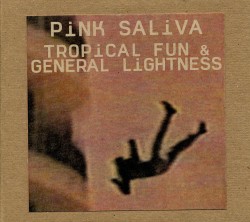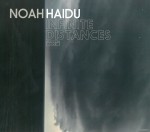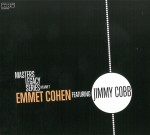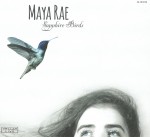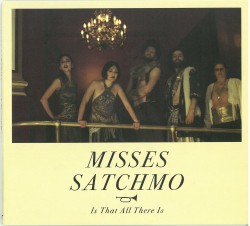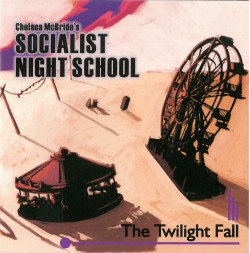Classic jazz, sometimes called Dixieland or trad jazz, can be a path into the music. However since the 100th birthday of recorded jazz passed last month, those who stick to recreating jazz standards of earlier eras are in the position of early music devotées who refuse to consider anything not played on period instruments. Ironically enough, some well-known Free players started out as Dixielanders, including saxophonist Steve Lacy and Toronto artist-pianist Michael Snow, but they soon switched to more challenging fare. Recently a new curiosity has emerged though. As a postmodern paradox some advanced improvisers are mixing old-timey classics with free-form sounds with unique results.
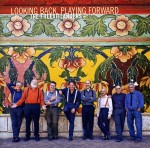 Take for instance the Italian octet The Freexielanders. On Looking Back, Playing Forward (Rudi Records RRJ1032 rudirecords.com) the band brings the same rollicking, texture-stretching freedom to contemporary originals as they do to two-beat tunes that were even considered warhorses in the early 1950s. Yet starting with the first track which blends the hoary St. James Infirmary with Gotta Get to St. Joe, the foot-tapping performance is done with such finesse that it’s obvious that Alberto Popolla’s sparkling clarinet blowing and Giancarlo Schiaffini’s gutbucket trombone slurs would impress during this pseudo-march exposition whether played in 1917 or 2017. This same sort of transubstantiation is applied to standards like Yardbird Shuffle, borne on trumpeter Aurelio Tontini’s Gabriel-like high chortles and slap bass from Gianfranco Tedeschi; or Black Maria that evolves into a hearty swing-shuffle dance, following a jagged split tone intro from the five horns plus vibraphone-clanking extensions from Francesco Lo Cascio that could have been part of a 1965 free-jazz date. Like actors who are as convincing in a Shakespearean production as in an action flick, the eight perform reverse alchemy on modern tunes. Sabor de habanera, a Schiaffini composition, moves from tango to tea dance to something more within the contrapuntal challenge between the trombonist and clarinetist and ends with a Count Basie-like repeated riff. Meanwhile Voci del Deserto, treated as a cousin to Hoagy Carmichael’s Hong Kong Blues, features both free-form reed wiggles from Popolla and sizzling Gene Krupa-styled pumps from drummer Nicola Raffone. Relentless polyphony that characterizes the recasting of Jelly Roll Morton’s Cannonball Blues relates both to notated orchestrations with a Native Indian-like lilt that pulls it one way plus slap bass and so-called Jungle effects trumpeting pulling it in another. More distinctively Tontini’s sputtering tongue stops and Schiaffini’s well-modulated slides not only made a perfect topping for the stacked reed trio vamps on Come Sunday but by leaves space for altissimo clarinet puffs. The piece is deconstructed to the extent that the performances – like most of the CD – become timeless.
Take for instance the Italian octet The Freexielanders. On Looking Back, Playing Forward (Rudi Records RRJ1032 rudirecords.com) the band brings the same rollicking, texture-stretching freedom to contemporary originals as they do to two-beat tunes that were even considered warhorses in the early 1950s. Yet starting with the first track which blends the hoary St. James Infirmary with Gotta Get to St. Joe, the foot-tapping performance is done with such finesse that it’s obvious that Alberto Popolla’s sparkling clarinet blowing and Giancarlo Schiaffini’s gutbucket trombone slurs would impress during this pseudo-march exposition whether played in 1917 or 2017. This same sort of transubstantiation is applied to standards like Yardbird Shuffle, borne on trumpeter Aurelio Tontini’s Gabriel-like high chortles and slap bass from Gianfranco Tedeschi; or Black Maria that evolves into a hearty swing-shuffle dance, following a jagged split tone intro from the five horns plus vibraphone-clanking extensions from Francesco Lo Cascio that could have been part of a 1965 free-jazz date. Like actors who are as convincing in a Shakespearean production as in an action flick, the eight perform reverse alchemy on modern tunes. Sabor de habanera, a Schiaffini composition, moves from tango to tea dance to something more within the contrapuntal challenge between the trombonist and clarinetist and ends with a Count Basie-like repeated riff. Meanwhile Voci del Deserto, treated as a cousin to Hoagy Carmichael’s Hong Kong Blues, features both free-form reed wiggles from Popolla and sizzling Gene Krupa-styled pumps from drummer Nicola Raffone. Relentless polyphony that characterizes the recasting of Jelly Roll Morton’s Cannonball Blues relates both to notated orchestrations with a Native Indian-like lilt that pulls it one way plus slap bass and so-called Jungle effects trumpeting pulling it in another. More distinctively Tontini’s sputtering tongue stops and Schiaffini’s well-modulated slides not only made a perfect topping for the stacked reed trio vamps on Come Sunday but by leaves space for altissimo clarinet puffs. The piece is deconstructed to the extent that the performances – like most of the CD – become timeless.
 Timeless too is a 1979 Paris duo between American cornetist/saxophonist Joe McPhee and French saxophonist/clarinetist André Jaume on Nuclear Family (Corbett vs Dempsey CD031 corbettvsdempsey.com). At a time when so-called young lions claimed ownership of all of jazz’s pre-1960s vocabulary and ignoring modern currents, these players presented their own originals alongside classics from the Duke Ellington band, Monk, Coleman and Charles Mingus. With a layer-cake-like recipe of dense and voltaic alto saxophone licks atop guttural bass clarinet slurps, the narrative of Ellington’s Come Sunday is more emotional yet grounded than the Freexielanders’ version. This combination of jump-through-hoops modernism coupled with heart-on-sleeve sentiments conveyed by Jaume’s tenor saxophone is augured on the preceding Chelsea Bridge and echoed on Nuclear, the free improvisation that follows. With variable snorts and spits nearly electric in output, the half-atonal, half-accessible theme is transformed when the pocket cornet’s sprightly grace notes add a whiff of Come Sunday to the exposition, completed by staccato growls and slurred snarls from reeds and brass. This tightrope-balancing act between affiliation and avant-garde is expressed throughout, whether the two play off one another’s advances with punchy note nips during Pithecanthropus Erectus or make jittery Blue Monk even more antsy in execution, as Jaume’s outer-space-like bass clarinet rumbling and McPhee’s tongue slaps and bites beak down the theme into atoms before reconstructing it. Echoes of early jazz even work their way into Rue St. Jaume. Here New Orleans-style tongued exaggerations from both saxophonists swirl around the theme like a handkerchief waving at a parade, with high-pitched split tones overlapping with the equivalent of a reverent coda at a jazz funeral.
Timeless too is a 1979 Paris duo between American cornetist/saxophonist Joe McPhee and French saxophonist/clarinetist André Jaume on Nuclear Family (Corbett vs Dempsey CD031 corbettvsdempsey.com). At a time when so-called young lions claimed ownership of all of jazz’s pre-1960s vocabulary and ignoring modern currents, these players presented their own originals alongside classics from the Duke Ellington band, Monk, Coleman and Charles Mingus. With a layer-cake-like recipe of dense and voltaic alto saxophone licks atop guttural bass clarinet slurps, the narrative of Ellington’s Come Sunday is more emotional yet grounded than the Freexielanders’ version. This combination of jump-through-hoops modernism coupled with heart-on-sleeve sentiments conveyed by Jaume’s tenor saxophone is augured on the preceding Chelsea Bridge and echoed on Nuclear, the free improvisation that follows. With variable snorts and spits nearly electric in output, the half-atonal, half-accessible theme is transformed when the pocket cornet’s sprightly grace notes add a whiff of Come Sunday to the exposition, completed by staccato growls and slurred snarls from reeds and brass. This tightrope-balancing act between affiliation and avant-garde is expressed throughout, whether the two play off one another’s advances with punchy note nips during Pithecanthropus Erectus or make jittery Blue Monk even more antsy in execution, as Jaume’s outer-space-like bass clarinet rumbling and McPhee’s tongue slaps and bites beak down the theme into atoms before reconstructing it. Echoes of early jazz even work their way into Rue St. Jaume. Here New Orleans-style tongued exaggerations from both saxophonists swirl around the theme like a handkerchief waving at a parade, with high-pitched split tones overlapping with the equivalent of a reverent coda at a jazz funeral.
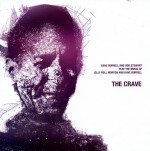 Pianist Jelly Roll Morton’s jazz funeral took place in 1941, but pianist Dave Burrell and tuba player Bob Stewart pinpoint the adaptability of Morton’s arrangements to contemporary setting on The Crave (No Business Records NBLP 100 nobusinessrecords.com) by splitting the program between three Morton compositions and three by Burrell. A commanding stylist, Burrell’s performances bring an Ellington-like refinement to this bare-bones format, opened up on tracks such as his own Pua Mae ‘Ole. But at the same time, like a couturier who insists on classic detailing on a leading-edge garment he’s crafting, the pianist doesn’t mute echoes of the past, such as primitive blues on Morton’s New Orleans Blues and ragtime reflections on Morton’s The Crave. On the latter Stewart defines the function of a so-called brass bass, huffing a grounding ostinato alongside the pianist’s jaunty interpretation that also twists tango intimations into Jazz, with intelligent pauses and contemporary chord augmentations not upsetting the piece’s terpsichorean orientation. In contrast, the tubist’s dramatic growling, coupled with the pianist’s meditative pace, ups the intense storytelling that is Burrell’s I Am His Brother. Instructively enough Burrell’s savvy conversion of two other Morton tunes points out the lineage between 1920s ivory ticklers and Monk. These Monkish allusions are especially noticeable on the harder-edged Spanish Swat, where Burrell’s keyboard creeping leads to opaque, moderato and angled patterning. His narrative, which slides from high-pitched glissandi to segmented bass chords, is held up like the top man on a human pyramid by Stewart’s puffing continuum. New Orleans Blues is taken at a more leisurely pace than the original, with contemporary note variations pockmarking the stone face of Morton’s original. These improvisations not only stretch the theme with the looseness of a cat chasing a string, but allow the tuba player’s contemporary oom-pah-pahs to march in rhythmic lockstep with Burrell’s deeply felt and relaxed tune elaborations.
Pianist Jelly Roll Morton’s jazz funeral took place in 1941, but pianist Dave Burrell and tuba player Bob Stewart pinpoint the adaptability of Morton’s arrangements to contemporary setting on The Crave (No Business Records NBLP 100 nobusinessrecords.com) by splitting the program between three Morton compositions and three by Burrell. A commanding stylist, Burrell’s performances bring an Ellington-like refinement to this bare-bones format, opened up on tracks such as his own Pua Mae ‘Ole. But at the same time, like a couturier who insists on classic detailing on a leading-edge garment he’s crafting, the pianist doesn’t mute echoes of the past, such as primitive blues on Morton’s New Orleans Blues and ragtime reflections on Morton’s The Crave. On the latter Stewart defines the function of a so-called brass bass, huffing a grounding ostinato alongside the pianist’s jaunty interpretation that also twists tango intimations into Jazz, with intelligent pauses and contemporary chord augmentations not upsetting the piece’s terpsichorean orientation. In contrast, the tubist’s dramatic growling, coupled with the pianist’s meditative pace, ups the intense storytelling that is Burrell’s I Am His Brother. Instructively enough Burrell’s savvy conversion of two other Morton tunes points out the lineage between 1920s ivory ticklers and Monk. These Monkish allusions are especially noticeable on the harder-edged Spanish Swat, where Burrell’s keyboard creeping leads to opaque, moderato and angled patterning. His narrative, which slides from high-pitched glissandi to segmented bass chords, is held up like the top man on a human pyramid by Stewart’s puffing continuum. New Orleans Blues is taken at a more leisurely pace than the original, with contemporary note variations pockmarking the stone face of Morton’s original. These improvisations not only stretch the theme with the looseness of a cat chasing a string, but allow the tuba player’s contemporary oom-pah-pahs to march in rhythmic lockstep with Burrell’s deeply felt and relaxed tune elaborations.
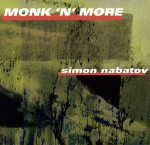 With many Monk compositions now nearly 70 years old, they’re as much classic jazz as Morton tunes. On Monk ’n’ More (Leo Records CD LR 780 leorecords.com), Russian-American pianist Simon Nabatov tries for a similar alchemical updating of five Monk lines by interspacing them among five originals that probe keyboard extensions using live electronics. Nabatov no more takes the Monk canon as immutable than a Talmudist would take the Torah’s words as unavailable for interpretation. Like that scholar’s theories, Nabatov’s explorations provide alternative readings of the pieces. Nabatov’s take on Skippy, for instance, is more herky-jerky than the original, while Oska T. is taken thicker and faster. Using pedal shading Nabatov adds echoes of the Russian Romantic tradition, while paradoxically emphasizing the tune’s swinging pulse that in turn links it to the blues and stride Morton and Ellington were perfecting in the 1920s and 1930s. Re-harmonized, Pannonica becomes more expansive, with the triplet-timed note colouration adding unexpected tenderness to its habitual angularity. Although most of the electronic experiments are concerned with laboratory-condition-like probes into pitch and timbral extensions, the additional clanging results confirm Monk’s unique orientation. The discontinuous interface on Electroacoustic Extension 4, for example, with its blurry pulses reflecting back onto the initial stop-and-start theme posits how Monk could have utilized computer programming. This is confirmed on Sunrise Twice Redux, the CD’s 14-minute centrepiece. Unfolding like a flower probed by a buzzing bee, unique pitch-bending techniques allow for tone examination, rhythmic asides and protracted pauses that add honeyed chamber music allusions to the jazz and electronics already present.
With many Monk compositions now nearly 70 years old, they’re as much classic jazz as Morton tunes. On Monk ’n’ More (Leo Records CD LR 780 leorecords.com), Russian-American pianist Simon Nabatov tries for a similar alchemical updating of five Monk lines by interspacing them among five originals that probe keyboard extensions using live electronics. Nabatov no more takes the Monk canon as immutable than a Talmudist would take the Torah’s words as unavailable for interpretation. Like that scholar’s theories, Nabatov’s explorations provide alternative readings of the pieces. Nabatov’s take on Skippy, for instance, is more herky-jerky than the original, while Oska T. is taken thicker and faster. Using pedal shading Nabatov adds echoes of the Russian Romantic tradition, while paradoxically emphasizing the tune’s swinging pulse that in turn links it to the blues and stride Morton and Ellington were perfecting in the 1920s and 1930s. Re-harmonized, Pannonica becomes more expansive, with the triplet-timed note colouration adding unexpected tenderness to its habitual angularity. Although most of the electronic experiments are concerned with laboratory-condition-like probes into pitch and timbral extensions, the additional clanging results confirm Monk’s unique orientation. The discontinuous interface on Electroacoustic Extension 4, for example, with its blurry pulses reflecting back onto the initial stop-and-start theme posits how Monk could have utilized computer programming. This is confirmed on Sunrise Twice Redux, the CD’s 14-minute centrepiece. Unfolding like a flower probed by a buzzing bee, unique pitch-bending techniques allow for tone examination, rhythmic asides and protracted pauses that add honeyed chamber music allusions to the jazz and electronics already present.
Gathering these strands together to revamp existing parts of the jazz canon is Nabatov’s contribution to examining classic music from new angles. All of these CDs are instances of how intermingling new ideas and older themes rejuvenates venerable material.
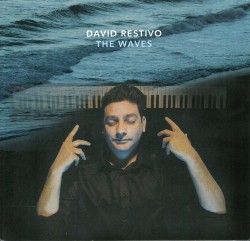 The Waves
The Waves


